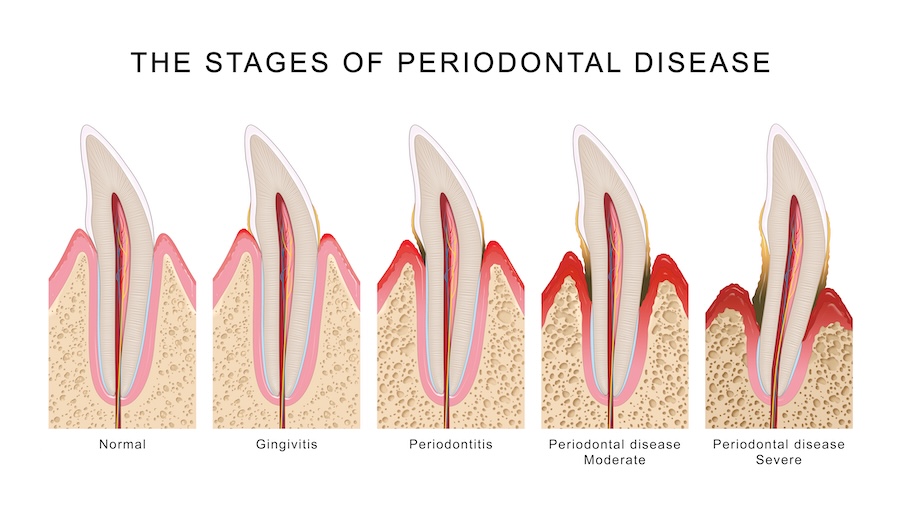
Stages and Symptoms of Gum Disease
July 18, 2025 9:00 amGum disease often develops slowly, with signs that are easy to overlook. A little bleeding during brushing. Slight gum tenderness. Nothing that feels urgent—until it is. Left untreated, gum disease can lead to gum recession, tooth mobility, and even bone loss.
Understanding the stages of gum disease can help you notice early symptoms, take action sooner, and protect your long-term oral health. It’s a common condition, but one that’s very manageable when caught early.
Stage One: Gingivitis
Gingivitis is the mildest and most common form of gum disease. The gums may appear red or puffy, and they might bleed easily when you brush or floss. You may also notice a change in breath or mild sensitivity.
At this stage, the inflammation is confined to the gums and hasn’t affected the bone. That’s good news—because gingivitis is reversible. A professional cleaning and renewed brushing and flossing habits at home often restore the gums to a healthier state.
Stage Two: Early Periodontitis
If gingivitis isn’t addressed, it can progress into early periodontitis. Now the gum tissue begins to pull away from the teeth, creating small pockets where bacteria collect. These bacteria can start to affect the bone supporting your teeth.
At this stage, treatment typically includes a deep cleaning—also known as scaling and root planing—to remove plaque and bacteria below the gumline. You may also receive localized antibiotics to help reduce infection and inflammation. With care and follow-up, further damage can be prevented.
Stage Three: Moderate to Advanced Periodontitis
As gum disease progresses, the pockets deepen and more bone loss occurs. Teeth may start to feel loose, and gums may recede further. You might notice exposed roots or shifting in your bite.
This stage often requires more involved treatment and routine periodontal maintenance visits to stabilize the condition and prevent tooth loss. The goal becomes preserving what’s left—and avoiding more serious complications.
Gum Health and the Rest of the Body
It’s easy to think of the mouth as separate from the rest of your body—but the connection runs deeper than most people realize. The same bacteria that cause gum disease can travel through your bloodstream, contributing to inflammation elsewhere. Studies have linked untreated gum disease to heart disease, Alzheimer’s, diabetes complications, and even issues during pregnancy.
Taking care of your gums isn’t just about keeping your teeth—it’s part of taking care of yourself. When your mouth is healthy, it supports the rest of your health, too. It’s one more reason to treat gum symptoms early and stay consistent with checkups. Small steps now can make a real difference down the line.
Deep Cleanings at Beaufort Center for Dentistry in Beaufort, SC
At Beaufort Center for Dentistry in Beaufort, SC, Dr. Louis Costa III and his team take gum health seriously at every stage. Whether you’re seeing early signs or managing more advanced symptoms, they’ll work with you to create a plan that fits your needs and supports long-term stability.
If you’ve noticed changes in your gums or haven’t had a checkup in a while, call today to schedule an evaluation. A quick visit now can go a long way in preserving your smile and preventing bigger problems later.
Categorised in: Gum Health


